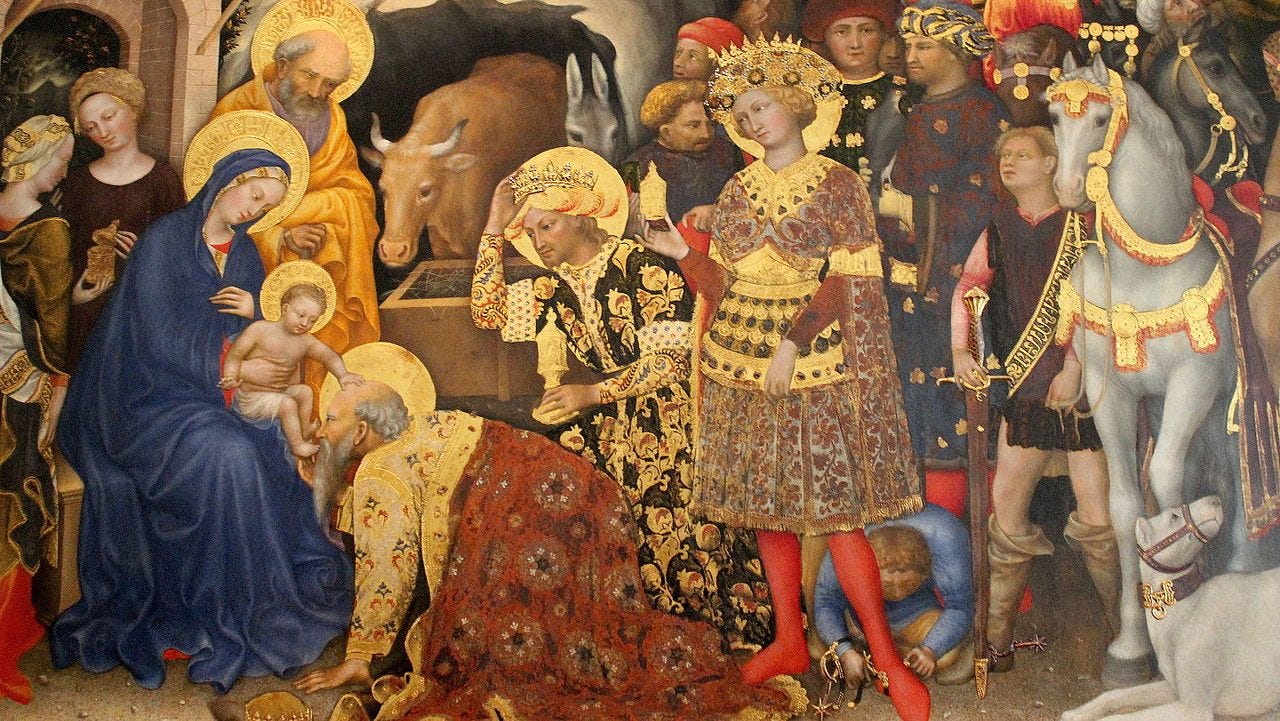Epiphany as the manifestation of Christ’s Kingship
Fascinating links with the Roman Empire reveal Epiphany as a great feast of Christ as King, and as the eternal Bridegroom of the Church.

Fascinating links with the Roman Empire reveal Epiphany as a great feast of Christ as King, and as the eternal Bridegroom of the Church.
Epiphany—The Feast
The ordering of the Roman liturgical books leads us to think of the year as starting with Advent and leading into Christmastide—a season lasting for the twelve days until Epiphany.
In this series, we have already seen that in Advent’s liturgical texts, the Church calls again and again for her Lord to come to us. She promises her children that he is very close to them, and that he will arrive in glory, without delay – and that this anticipation inculcates a hope which should make us strong in the face of the ecclesiastical and civil chaos of our time.
The excitement and restlessness at his coming only increases as Advent progresses, especially on Christmas Eve. On Christmas Day itself (and the following days), the Church’s liturgy declares war on the powers of darkness, and portrays Christ’s incarnation as the fulfilment of time, the inauguration of the messianic Kingdom – and may be seen to commemorate his final coming as well as his first.
Where does this leave Epiphany? In such a paradigm, Epiphany can sometimes seem like little more than a feast marking the end of Christmas, and Epiphanytide is a sort of “waiting-game,” broken up by Candlemas, until the great paschal cycle starts with Septuagesima.
We can see why, perhaps, the Vatican II revolutionaries gave Epiphanytide and the Sundays after Epiphany the banal title of “ordinary time.”
However, some liturgical writers see almost every detail here in a different (and much more interesting) way. According to the writers which we have been considering in this series, the Epiphany is not merely a feast to mark the end of Christmas, and Epiphanytide is not just passing of the time until Septuagesima. Rather, they are a really very significant feast and season in themselves.
Indeed, they argue, this feast is much more significant than is commonly considered—it is the culmination of the annual liturgical cycle. In this, it also commemorates the final culmination of time, and the beginning of eternity.
This is a members-only post for those who support us with monthly or annual subscriptions. It’s a part of our series The Roman Liturgy on the liturgy, and reasons for hope amidst the crisis in the Church.
Our work takes a lot of time and energy. Please consider subscribing if you like it.
Here’s why you should take out a membership of The WM Review today:
Help us continue building the case for a restrained, theological approach to the crisis in the Church
Support an eclectic and sometimes eccentric variety of content
Provide FREE membership to clergy/seminarians (subscribe and reply to the email if this applies to you.)
A small monthly membership really helps us keep The WM Review going. Can you chip in today?

